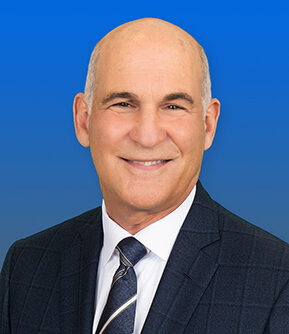Frequently Asked Employee-Related Questions About the CARES Act
We have received numerous questions regarding the new Coronavirus Aid, Relief and Economic Security Act (“CARES Act”). Our corporate group has published a description of the new loan and forgiveness provisions of the CARES Act today, so we will not repeat that detail here.
How does the CARES Act affect our company if we have been permitted to stay open?
If you have 500 employees or less and have retained your employees (whether working at your facility or remotely), you can obtain a low interest (max. 4%) SBA loan, administered through your lender, of 2.5 times your average monthly payroll over the last year up to $10M. The loan is intended to cover salaries (up to $100,000), paid leave, severance, insurance premiums, mortgage, rent and utilities. This applies even to the self-employed and independent contractors. You may defer repayment for up to 12 months.
Does our company have to pay the loan back?
The loan is 100% forgivable if you maintain the same level of workforce, without reduction in compensation, during the eight-week period after the loan was provided (see below for additional criteria). The amount of forgiveness will equal the amount spent on the items listed above over an eight-week period after the loan was provided.
What if some of the company’s employees were already laid off or compensation reduced?
The amount forgiven will be reduced proportionally by any reduction in full-time equivalent employees retained compared to the period of either February 15, 2019 to June 30, 2019 or the period of January 1, 2020 to February 29, 2020 and further reduced by the reduction in pay of any employee earning less than $100,000 annually in excess of 25% of their prior full quarter year compensation. It is unclear at this point if terminations for cause will affect loan forgiveness.
Can we bring employees back from layoff and still be able to get the loan and be eligible for loan forgiveness?
Yes, there is a specific provision that allows employers to rehire any employees who were laid off between February 15, 2020 and April 26, 2020, so long as the reduction has been eliminated by June 30, 2020. Under those circumstances, the loan forgiveness reduction formula set forth above will not apply.
What if our company has been required to close by the government?
The law is silent on the availability of payments for employees who have no work to perform because their employer is required to close and they cannot accomplish their job duties remotely. It appears that Congress intended employers to maintain their workforces regardless. Therefore, you can bring your employees back from layoff, pay them even if there is no work to be performed, and cover the payments through the CARES Act loan. We caution, however, that it is likely the loans will not be available for at least a month, so this may present cash flow issues. You can also wait until the SBA program is established and bring the employees back then, recognizing that there may be a forgiveness reduction in some amount.
Are there additional tax credits and deferments available with respect to employee expenses?
Yes, there is a payroll tax credit for 50% of wages paid if your operations were fully or partially suspended due to a shutdown order or gross receipts declined by more than 50% compared to the same quarter in the prior year. If you have 100 or fewer employees, the credit applies to all wages paid, whether you were open or closed. If you have over 100 employees, the credit applies to wages paid to employees who were not providing services due to a shutdown order. The credit applies to the first $10,000 of compensation, including health benefits, for each employee, and covers the period from March 13, 2020 to December 31, 2020. This is separate from the tax credits that are available for paid sick leave under the Families First Coronavirus Response Act (“FFCRA”). In addition, companies may defer payment of the company share of the 6.2% social security tax, so that ½ will be due by December 31, 2021 and the other half due a year later. Note that if an employer receives a SBA loan under the new loan program describe above, these payroll tax credits are NOT available.
Does the CARES Act address the provisions of the FFCRA?
Yes, the law restates the limitation on payments per employee of $200 per day ($10,000 total) under the FMLA extension and paid sick leave to care for a quarantined individual or child whose school or daycare center has closed and the limitation of payments of $511 per day ($5110 total) under the other paid sick leave provisions. Employees who were laid off on or after March 1, 2020 who are rehired will have access to these payments, so long as they worked for the employer for at least 30 days before the lay off.
What are the additional unemployment compensation benefits available?
The law creates a Pandemic Unemployment Assistance program through December 31, 2020 to provide benefits to individuals who are unable to work because of the public health emergency, and who were traditionally not eligible for benefits, such as the self-employed, independent contractors or those with limited work history. It also increases payments by an additional $600 per week payment for up to four months. Money is now available for states to pay recipients immediately, rather than after a one week waiting period. Finally, there is an additional 13 weeks of benefits available through December 31, 2020 for those who remain unemployed after state unemployment benefits have been exhausted.
What if our company is larger than 500 employees?
There is a provision in the law that provides money for loans to larger employers through the Federal Reserve but there are significant strings attached: (1) the employer must retain at least 90% of the workforce, with full compensation and benefits through September 30, 2020; (2) the employer cannot outsource or offshore jobs for the term of the loan plus two years; (3) the employer has to keep existing union contracts in place for the term of the loan plus two years; and (4) the employer has to remain neutral in any union organizing effort for the term of the loan.
We know this only covers a small portion of the questions you may have, and we will continue to provide you updates. In the interim, if you have questions, please contact Joseph Hofmann, Ken Kleinman or the Stevens & Lee attorney with whom you regularly work.
This News Alert has been prepared for informational purposes only and should not be construed as, and does not constitute, legal advice on any specific matter. For more information, please see the disclaimer.


